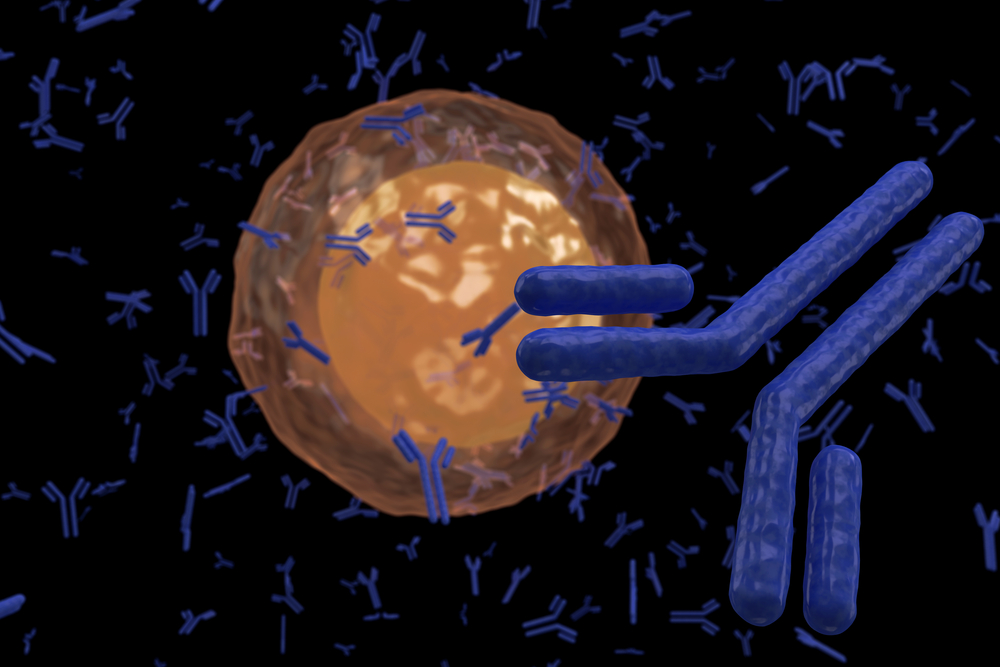For decades, the main avenues of cancer treatment have been surgery, chemotherapy, and radiation therapy. However, over the past decade, targeted therapies like imatinib (Gleevec) and trastuzumab (Herceptin) — drugs that target cancer cells by homing in on specific molecular changes seen primarily in those cells — have also become standard treatments for certain types of cancer.
And most recently, the National Institutes of Health’s National Cancer Institute notes that in spite of years of abortive starts and stutter steps, excitement is now building regarding the development of immunotheimmunotherapieser. That is: therapies that harness the power of a patients immune system to combat their disease, or what the NCI notes some in the research community are calling a “fifth pillar” of cancer treatment.
An immunotherapy approach that involves engineering patients own immune cells to recognize and attack their tumors. Engineered artificial T cell receptors (also known as chimeric T cell receptors, chimeric immunoreceptors, chimeric antigen receptors (CARs) ) graft an arbitrary specificity onto an immune effector cell — typically a monoclonal antibody onto a T cell; with the transfer of their coding sequence facilitated by retroviral vectors. T cells are removed from a patient and modified so that they express receptors specific to the particular form of cancer. The T cells, which can then recognize and kill the cancer cells, are reintroduced into the patient in what is called called adoptive cell transfer (ACT).
ACT has been restricted to small clinical trials so far, but results are promising, with treatments using these engineered immune cells having produced some remarkable responses in patients with advanced cancer. For example, the NCI notes that in several early-stage trials testing ACT in patients with acute lymphoblastic leukemia (ALL) — people with advanced cases who had few if any remaining treatment options, many patients cancers disappeared entirely with several of these patients remaining cancer-free for extended periods, and that equally promising results have been reported in several small trials involving patients with lymphoma, although these trials’ lead investigators caution that much more research is needed.
A new DelveInsight Report: “Chimeric Antigen Receptor (CAR) T cell Immunotherapy- Competitive Landscape, Technology and Pipeline Analysis, 2015” emphasizes currently active CAR-T cell products in research and development. The Report covers the more than 35 companies currently active in this field, including 14 leading companies with 35 products targeting 20 different antigens and 9 different technologies.
The Report provides in-depth analysis on the CAR-T cell profiles covering ongoing pre-clinical and clinical studies, Collaborations details and Deal values, Technologies and Targeted antigens, as well as reporting on CAR-T licensing opportunities, acquisitions, market drivers and barriers followed by SWOT Analysis. It also describes the unmet needs covered by CAR-T cells, highlighting adverse events that which are major concerns in the market for usage of CAR-T cells.
 The NCI cites Renier J. Brentjens, M.D., Ph.D. , of Memorial Sloan Kettering Cancer Center (MSKCC) in New York observing that results from the trials performed thus far are proof of principle that we can successfully alter patients T cells so that they attack their cancer cells.” Dr. Brentjens notes that in light of encouraging results in mouse studies, he and research colleagues at his Memorial Sloan Kettering lab are now testing this approach at in patients with chronic lymphocytic leukemia and acute lymphoblastic leukemia who are no longer responsive to chemotherapy. “These highly innovative studies will hopefully result in a novel and successful treatment option for patients with certain forms of hematologic cancers,” he says.
The NCI cites Renier J. Brentjens, M.D., Ph.D. , of Memorial Sloan Kettering Cancer Center (MSKCC) in New York observing that results from the trials performed thus far are proof of principle that we can successfully alter patients T cells so that they attack their cancer cells.” Dr. Brentjens notes that in light of encouraging results in mouse studies, he and research colleagues at his Memorial Sloan Kettering lab are now testing this approach at in patients with chronic lymphocytic leukemia and acute lymphoblastic leukemia who are no longer responsive to chemotherapy. “These highly innovative studies will hopefully result in a novel and successful treatment option for patients with certain forms of hematologic cancers,” he says.
In an OncLive video, Dr. Brentjens explains how immune cells (T cells) are naturally programmed to be able to distinguish between self and nonself cells, which express foreign proteins, and how once detected, T cells attack and kill foreign cells. He notes that that an idea central to immunotherapy is to “reeducate” T cells to make them recognize cancer cells as being foreign. Unlike an antibody or chemotherapy, T cells can persist and proliferate in the patient.
More videos from Dr. Brentgens can be found here:
http://www.onclive.com/specialist/Renier%20J.%20Brentjens,%20MD,%20PhD
The DelveInsight Report Highlights include:
– CAR-T cell Therapy Pipeline scenario
– Collaborations & partnering deals
– Current Prominent Research Areas and Key Players
– Pipeline product profiles CAR-T Technologies and Targeted Antigens
– Licensing opportunities
– Market Drivers and Barriers
Scope of the Report:
– Overview of the global CAR-T cell therapy pipeline scenario, products and associated companies information
– Coverage of global CAR-T cell therapies under development
– Competitive landscape of products for key players and related indications
– Coverage of licensors, collaborators and Development partners, deal terms and deal values estimation
– Pipeline analysis across different phases, emerging trends and comparative analysis of pipeline products with detailed clinical profiles, mechanism of action, route of administration and molecule type, along with product development activities
– Highlights of licensing & collaboration opportunities and funding details
– Highlights of latest CAR-T technologies and innovative companies
– Key topics covered include strategic competitor assessment, barriers and drivers in the market along with SWOT analysis
Reasons to buy
– Pipeline intelligence and complete understanding over therapeutics development of CAR-T cell products to exploit opportunities
– Explore outcomes of Pre-clinical and clinical studies and Identify prominent therapeutic areas
– Develop & design strategies to gain competitive advantage by tracking the latest CAR-T technologies and associated innovative companies
– Track in-licensing and out-licensing strategies by identifying prospective partners with the most attractive projects to enhance and expand business potential and scope
– Uncovering opportunities in the rapidly growing market, Optimize portfolio, keep updated and make the best decisions for business development
– Identifying the upcoming leaders and products in the CAR-T cell therapy market in the coming years
– Understand the CAR-T competitive landscape, plan mergers and acquisitions effectively by identifying key players of the most promising pipeline
A link to purchase the full report can be found at:
http://www.reportlinker.com/p03078318-summary/view-report.html
The report Table of Contents can be viewed at:
http://bit.ly/1CkiSAi
Sources:
ReportLinker
National Cancer Institute
Memorial Sloan Kettering Cancer Center
OncLive
Wikipedia
Image Credit:
Memorial Sloan Kettering Cancer Center


